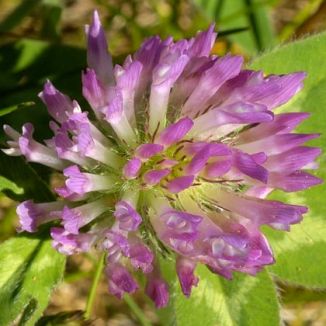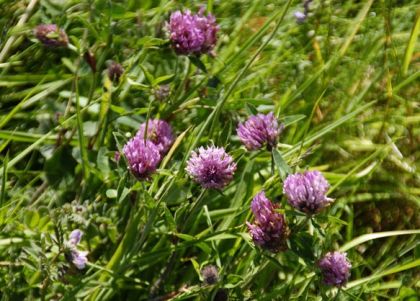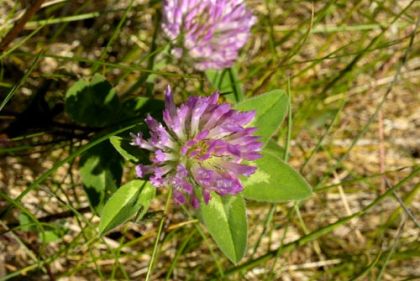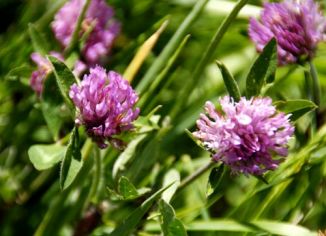Well-known on both waste and cultivated land, the Red Clover is a straggling, hairy plant which spreads throughout moist but well-drained soils. Widely grown for fodder, its small, pinkish to reddish purple 12-15mm flowers are borne in large, ovoid, dense heads from May to October. The trifoliate leaves have elliptical leaflets, each bearing a white crescent-shaped mark. Like other peaflowers, Red Clover fixes nitrogen into the soil which other plants can then absorb. This is a native plant and belongs to the family Fabaceae.
I first identified this plant in 1977 in Dalkey, Co Dublin and photographed it in Wellingtonbridge, Co Wexford in 2006.
If you are satisfied you have correctly identified this plant, please submit your sighting to the National Biodiversity Data Centre



